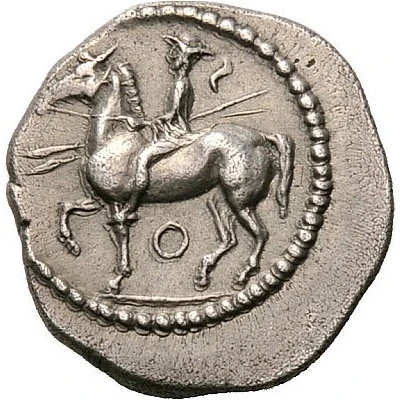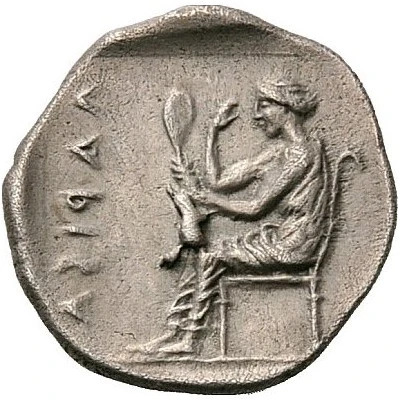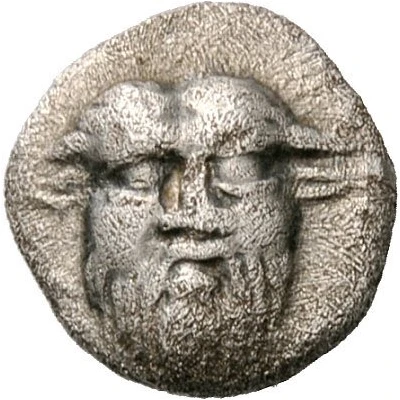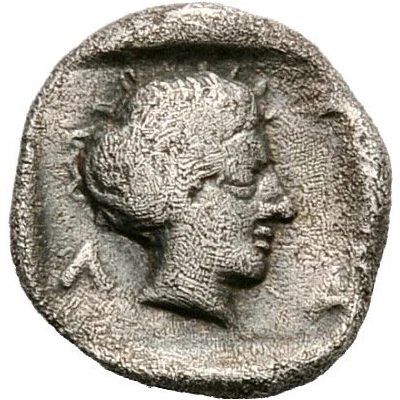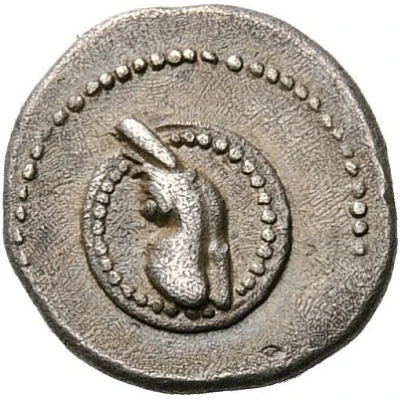
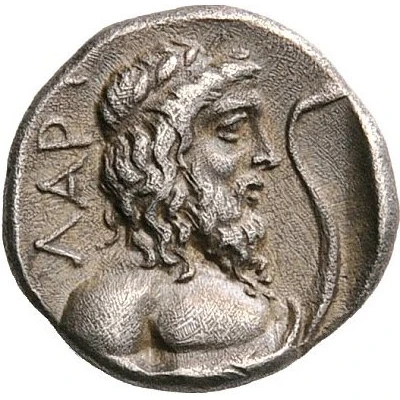

© Nomos AG
Trihemiobol 440 BC - 400 BC
| Silver | 1.10 g | - |
| Issuer | Larissa (Thessaly) |
|---|---|
| Type | Standard circulation coin |
| Years | 440 BC - 400 BC |
| Value | Trihemiobol (¼) |
| Currency | Drachm |
| Composition | Silver |
| Weight | 1.10 g |
| Shape | Round (irregular) |
| Technique | Hammered |
| Demonetized | Yes |
| Updated | 2024-10-10 |
| Numista | N#170984 |
|---|---|
| Rarity index | 100% |
Reverse
Diademed bust of Asklepios to right, wearing long beard and with slight drapery over his chest; before him, snake turned to right
Script: Greek
Lettering: Λ Α Ρ I
Comment
Herrmann F/G IIIβ II, II and pl. III, 15 var (there a horse’s hoof); Traité 690 and pl. CCXCVII, 23.
Interesting fact
The Trihemiobol coin from Larissa (Thessaly) was used as a form of currency in ancient Greece during the 5th century BC. Its name "Trihemiobol" comes from the Greek words "tri", meaning three, and "hēmi-", meaning half, referring to the coin's value being equal to half of a drachma, which was the standard unit of currency in ancient Greece.
